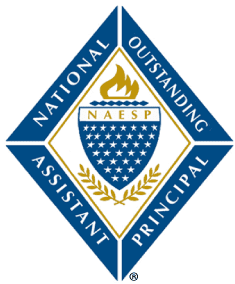
Bebi Davis
Kawananakoa Middle School
Honolulu, Hawaii
bebi.davis@k.12.hi.us
Best Practices
1) Student-Centered Innovative-Integrative-Instruction with Compassion: As a school instructional leader, I must be the biggest cheerleader, coach, and role model to shape and sustain a healthy culture of innovative 21st century teaching and learning for all. I believe that adult learning is as critical as student learning. My daily best practice (Student-Centered-Innovative-Integrative..,Instruction-with-Compassion) is supporting teachers to enhance teaching and learning skills by shifting from a teacher-centered to a more student-centered pedagogical approach. To drive 21st century innovation student-centered instruction, I model and promote the practice of integrative teaching that fosters problem solving, creativity, collaboration, equity and Social-Emotional-Learning (SEL).
Through my open door policy, which some teachers refer to as “Dr. Davis’ Shop on creative/innovative student-centered teaching”, I provide collective and one-on-one support for all teachers to boost Tier-I instruction tailored to all students’ needs. I promote a supportive culture by visiting classrooms and utilizing collaborative coaching feedback strategies to maximize teaching and learning development. I engage teachers in reflective practice and the strategy we use is to identify the strengths, challenges, and then identify best practices and next steps to shift from teacher-centered to student-centered instruction. Daily, via informal dialogue/discussions, professional learning, and/or formal Educator-Effectiveness-System, I foster professional conversations on student-centered learning, innovative instructional and assessment practices, and next steps to enhance equitable student success.
I utilize my prior experience as a physics/chemistry/robotics teacher and district STEM/Math/Computer Resource-Teacher to support innovation and creativity. To develop lifelong learners, we implemented integrative standards-based pedagogical practices. We promote holistic learning to minimize the limitations often imposed by subject boundaries. For example, Computer Science (CS)-First is used by English-Language-Arts/ELA classes to integrate Scratch-Block-Coding. Through characterimtion, students create visuals that represent the literal and figurative meaning of elements of poetry. Also, as a prior Altino-Innovative-Cars and Arduino trainer, I utilize my skills to support/mentor students and teachers with project-based-learning. Collectively, engaging students’ and teachers’ knowledge and skills to encourage exploration. Thus, engaging students’ intellectual curiosity/risk-taking, fosters higher levels of thinking and promotes the ability to innovate. As a result, teachers and students contextualize learning to student’s real-life, and promote student-choice/voice. The best-practice inspires learners, foster innovative thinking, and creative problem solving.
Each week, I visit our classrooms, and capture whole-class student-centered practices. To celebrate, I started a weekly Academic Spotlight sharing it with our Kawananakoa Community via https://www.kawananakoakl2.hi.us/news/kms-update. I highlight the teachers’ innovative-student-centered strategies and the students’ innovativeness and creative products. Our Spotlight/Sharing-and-Caring strategy serves as a learning tool for teachers and myself; thus, causing a snowballing effect of transforming innovation and creativity in our learning processes. As a result, our Mathematics/Science/ELA 2022 State Assessment scores increased withl8% increase in student science proficiency. Also, wellness positivity rate (School-Quality-Survey) and (SEL-Panorama-Fall-2022)-self-management, social awareness, grit, self-efficacy, emotion-regulation, sense-of-belonging, and growth-mindset from our students increased. The positive result affirms our student-centered best practice culture is impactful and grounded in our school vision “Knowledge-and-Wisdom-with-Compassion”.
2) Horizontal-Organizational-Data-Driven-Decision-Making: The best practice of Horizontal-Organizational-Data-Driven-Decision-Making collectivity promotes shared leadership and best data-informed decisions aligned to goals/objectives to support student success. To sustain our best practice, I developed a student-centered-eDataWall where each child’s data is highly visible and accessible instantaneously. Administration, Instructional-Leadership-Team/(ILT), Academic-Review-Team/(ART), Parent-Network, Student-School-Community-Council, and Departments/Teams/Committees,/Operational-Team provide insights and is valued and heard. As a result, our school culture is shifting towards more collaboration and shared leadership where all stakeholders are part of our decision-making process.
We implemented the ILT and the Cycles-of-Professional-Learning/(CPL) to build collective efficacy through the Four-Stage-Process (Frame-the-Learning, Explore/Experiment, Learn-by-Doing, and Monitor-Progress). ILT fosters shared leadership and inspires continuous improvement of instructional practices. Teachers become instructional leaders and drivers of instructional changes. The CPL-Process ensures all members of the faculty are supported through the implementation process. To enhance academic success for all students, we constantly utilize the eDatawall with Data-Team-Process as a critical aspect to inform effective actions and practices. One critical schoolwide data-informed-decision we recently made was the implementation of the Powerful-Instructional-Practice of student Analysis of Common Types of Informational Text through lnfographics, and Summarizing Infographic Information to written-text.
To foster collective-efficacy and productive-interactions, we consistently examine grades, attendance, and behavioral data with an equity-focused lens to ensure students are provided with equitable access to their education. Our data-team-process guides our analysis of baseline/ongoing data to identify needs, implement interventions, and monitor progress. This practice promotes a shared leadership organizational decision-making process that is inclusive, data-driven, and informed by the needs of students. Collaboratively, as we analyze data (grades/scores, SEL-needs, attendance, teacher-input), research, learn, and design interventions to best support each student and to maximize progress/positive outcomes for our students. We engage our collective talents to build human capital. I provide feedback to ensure effectiveness and monitor the outcomes tailored to meet the needs of each individual student.
Systemically, everyone is a key player fostering informed data-decision-making to drive instructional-equity where each person is known and valued, and receives an individualized, high-quality education to succeed. Schoolwide professional development/learning enhances Tier-I instruction that embeds “Forward Thinking Strategies”, Hawaii-Multi-Tiered-System-of-Support/a data-driven, team-based-decision-making framework for achieving positive outcomes for every student through a layered continuum of evidence-based practices. We use professional learning-targeted-intervention and inclusive practices, such as close reading strategy, Math-Thinking-Classroom, peer-to-peer collaboration whiteboarding, differentiation, sentence-stems, and collaborative conversations for critical thinking. Inclusive practices allow English-Learner/(EL) and special needs populations to integrate into general education classrooms. Feedback from students/parents/teachers validates a tremendous impact on students’ confidence and self-efficacy.
We employ a systemic and systematic approach to conduct our Comprehensive Needs Assessment. The Continuous-School-Improvement-Framework facilitates practical implementation focused on result-oriented school improvement strategies. We are more intentional and purposeful in addressing social/emotional,/health/academic-gap/behavioral challenges and root-causes to sustain a culture of equity. USNews ranked Kawananakoa as a Top 10 Hawaii middle school. To prepare productive-global-citizens, I practice/lead learning via Collective-Collaboration across Horizontal-Organizational-Data-Driven-Decision-Making Groups, and monitoring/supporting Teacher-Student-Success to foster Successful-Systems.


